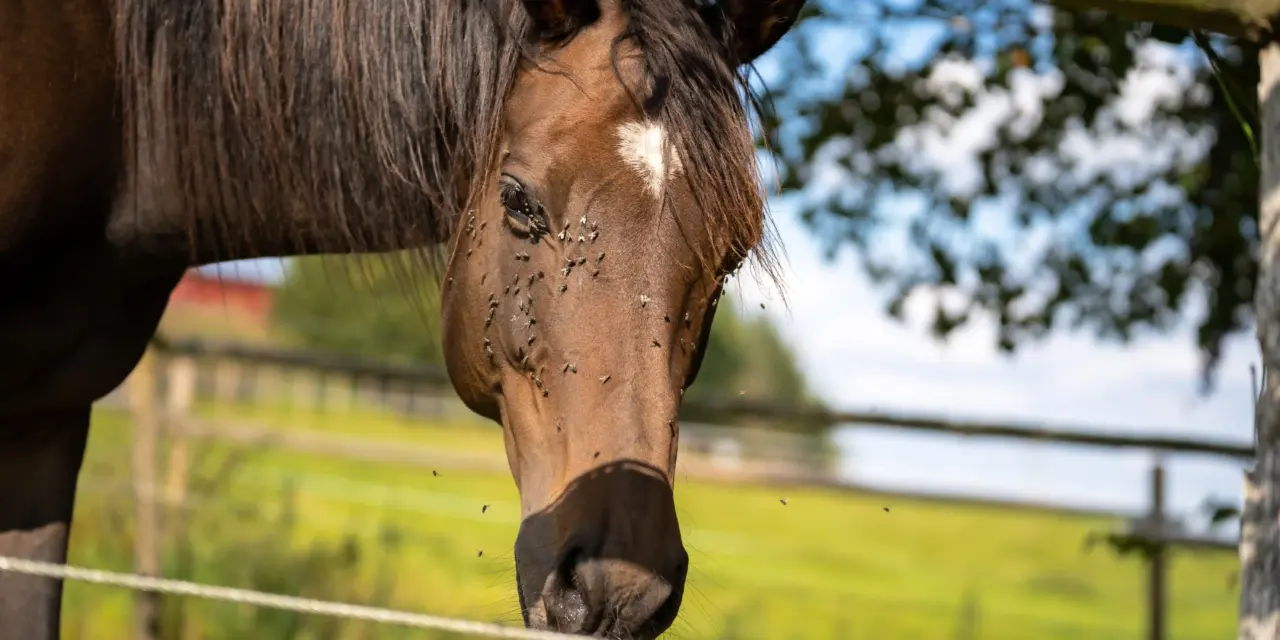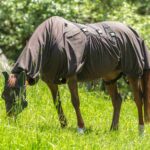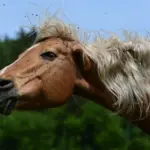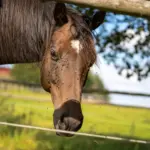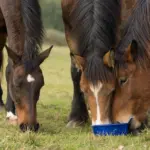How thoughtful hygiene and the right feeding can help keep insects at bay
Key Points at a Glance
- Manure management: Daily mucking out and storing manure away from the stable drastically reduces fly populations
- Water hygiene: Standing water is a breeding ground for mosquitoes and must be eliminated
- ‘Nutritional influence: High-sugar diets make horses more attractive to blood-sucking insects’
- Bitter herbs: Bitter and tannin-rich plants alter body odour and act as a natural repellent
- Natural helpers: Swallows, bats, and other insectivores reduce the number of pests
- Strategic planning: Wind corridors and location choice have a major impact on insect exposure
The fight against insects doesn’t start in the pasture – it begins in the stable and the feed trough. With smart management and the right feeding strategy, yard managers and horse owners can significantly reduce insect pressure on their horses – often without needing a single fly rug. Nature offers us tried and tested solutions; we just need to make good use of them.
Manure management: The key to fly control
What makes horse manure so appealing to insects
Horse manure is like a luxury resort for stable flies – warm, moist, and full of organic matter, it’s the ideal breeding ground. If muck isn’t removed regularly, a single generation of flies can multiply rapidly and turn into a major infestation in just a few weeks.
Daily mucking out as a basic rule
The most effective measure against flies is as simple as it is efficient: thorough daily mucking out of all stable areas. It’s not just about removing obvious droppings – damp bedding and hidden corners where manure can accumulate also need attention. Warm spots, such as sunlit paddocks or poorly ventilated corners of the stable, are especially problematic. Flies multiply rapidly here, as the higher temperatures speed up their development cycle.
Strategic manure storage
Just as important as mucking out is managing where the manure goes. Ideally, it should be stored at least 100 metres away from the stable. Flies can travel surprisingly far, but the greater the distance to their breeding ground, the lower the insect pressure around your horses. A well-managed muck heap will compost properly, generating enough internal heat to kill fly larvae. Turning the heap regularly and ensuring a good balance of wet and dry material helps maintain this process – turning a potential fly hotspot into a self-sterilising system.
Water management: eliminating mosquito breeding grounds
Mosquitoes need standing water to breed. Even the smallest pools can turn into mosquito nurseries within just a few days. A thorough check of the entire yard and stable area often reveals unexpected sources of stagnant water – like forgotten buckets in the bushes, clogged gutters, leaky pipes, or puddles that linger for days after rainfall. Water troughs that aren’t cleaned regularly can also become a breeding ground.
Preventive water hygiene
The solution lies in consistent hygiene and regular checks. Water buckets should be thoroughly cleaned at least once a week. Buckets and tubs shouldn’t be left standing full of water unless they’re in active use. For larger water areas such as ponds or retention basins, fish can be introduced to naturally control mosquito larvae. Special bacterial treatments that kill larvae can also be an eco-friendly option—but they should be used with care and only when there is no alternative, such as in drainage ditches on former wetland pastures.
Drainage and water management
Long-term solutions include improving drainage, installing paddock mats, adding gravel, planting vegetation, or using other methods to prevent water from pooling in problem areas. These investments quickly pay off by significantly reducing mosquito problems.
How your horse’s diet could be drawing in biting insects
The secret behind “sweet blood”
The old saying that some people have “sweet blood” and attract more insect bites may hold more truth than we once thought. In horses, the connection is even more obvious: what a horse eats directly influences how appealing it is to biting insects.
Sugar as an insect magnet
Horses with high blood sugar levels are especially attractive to mosquitoes and horseflies. The reason is simple: the higher the sugar content in the blood, the more energy an insect gets from a single blood meal. Over time, biting insects have evolved to recognise and prefer these more “profitable” hosts. Modern feeding practices – rich in sugary mueslis, cereals, and sweet treats like apples or carrots – can push a horse’s blood sugar unnaturally high. What may seem like a kind gesture ends up turning the horse into a prime target for insects.
Identifying problematic feedstuffs
Particularly critical are:
- Mueslis with high sugar or starch content
- Sweet treats like apples, carrots or commercial horse treats
- Hidden sugars from added molasses, syrups, beet pulp, apple pomace & similar
- Haylage and other fermented feeds that upset the digestive balance – even an acidic body odour can attract insects
The path to an insect-repelling diet
A species-appropriate, low-sugar diet makes horses significantly less attractive to insects. The main feed should consist of high-quality, low-sugar hay. Concentrated feed is often unnecessary and can be replaced with healthy alternatives such as OKAPI’s Four Season Herbal Feeds or the Ready-to-Feed Sainfoin pellets.
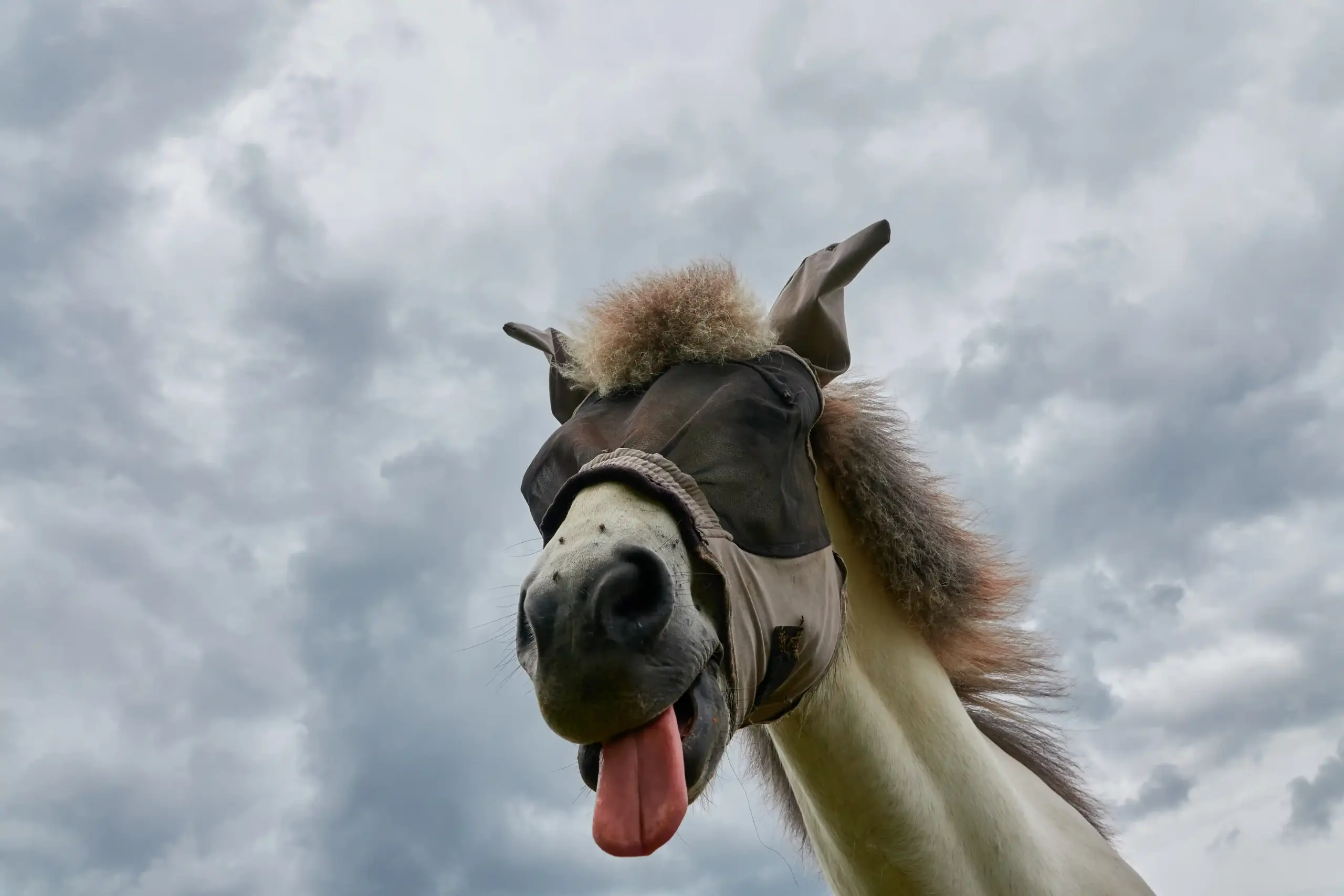
Bitter herbs: Natural insect repellent from within
How bitter compounds work
Wild horses have access to a wide variety of plants with different active compounds. Many of these plants contain bitter substances that not only support digestion but also alter the horse’s body scent in a way that makes them less attractive to insects.
Proven herbs to repel insects
Dandelion is one of the most effective natural insect repellents and is eagerly eaten by most horses. Its bitter compounds help stabilise gut flora and alter the horse’s body odour in a way that makes it less attractive to insects. Yarrow and oak bark have similar properties and also support digestive health, which is why many horses instinctively seek out acorns or nibble on oak leaves when given the chance. Mugwort and wormwood are also traditionally considered insect-repelling herbs, but they must be used sparingly, as their extremely bitter taste means that wormwood in particular is often rejected when fed on its own.
Correct dosage and use
Bitter herbs should not be fed in large quantities over long periods, but rather as short-term courses of 2–3 weeks. A blend of various herbs is often more effective than feeding individual plants. Quality is key: look for human grade 1 quality herbs or purchase blends from reputable suppliers who meet these standards. Dried herbs quickly lose their active compounds and must be stored in a cool, dry, and dark place to preserve their effectiveness.
Caution with miracle cures
Garlic is often mentioned as a natural insect repellent, but it’s generally not recommended for horses. The amounts needed to have a noticeable effect can lead to anaemia. Other so-called “secret tips” should also be treated with caution and only used after consulting a vet or an experienced equine therapist.
Encouraging natural allies
Swallows: The most effective fly hunters
A single swallow can eat several thousand insects a day. Barn swallows prefer to hunt around stables, while house martins are more active in open areas. Providing nesting opportunities and avoiding disturbance during the breeding season can help boost their numbers. A stable without swallows is a sad place indeed.
Bats as nighttime helpers
Bats specialise in hunting nocturnal insects and can consume their own body weight in mosquitoes in a single night. Installing bat boxes near the stable helps attract these highly efficient hunters.
Other natural allies
Other birds such as swifts, wagtails, and even spiders also play a valuable role in insect control. A nature-friendly stable environment with hiding places and nesting spots encourages this biodiversity.
Strategic site planning
Wind as natural insect protection
Insects have a much harder time landing in windy conditions, which is why coastal areas with steady breezes tend to suffer far less from annoying insects than still, windless regions. Clever placement of hedges can help channel and amplify natural airflow. It’s important to plant hedges lengthwise in the direction of the prevailing wind to create a continuous breeze.
Choosing the right location for new builds
When planning new stables, insect control should be considered from the outset. Stables built near wetlands or standing water naturally face higher insect populations. Orientation in relation to prevailing winds and the potential for natural shade also play a key role in how many insects will be present.
Optimising the microclimate
Even existing facilities can benefit from small changes that have a big impact. Removing wind-blocking obstacles, creating wind corridors, or planting strategically can alter the microclimate in a way that makes it less favourable for insects. Some trees and shrubs are known to repel insects naturally. There’s a reason why beer gardens have traditionally been planted with chestnut trees. Farmers, long-time observers of nature, have placed geraniums on their windowsills for generations because the scent of geraniol deters flies and mosquitoes. Similarly, walnut trees were often planted near the front door, with a bench beneath them for relaxing in the evening — using nature’s tricks to keep pests at bay.
A holistic approach for long-term success
The most effective way to control insects is by combining all of these strategies into one cohesive, holistic concept. Stable hygiene, smart feeding practices, and encouraging natural predators all work together to create an environment that insects find uninviting. The big advantage? These measures aren’t just effective against insects — they also promote horse health and boost biodiversity around the yard. The result is a natural balance that requires no chemicals or excessive technical solutions.

